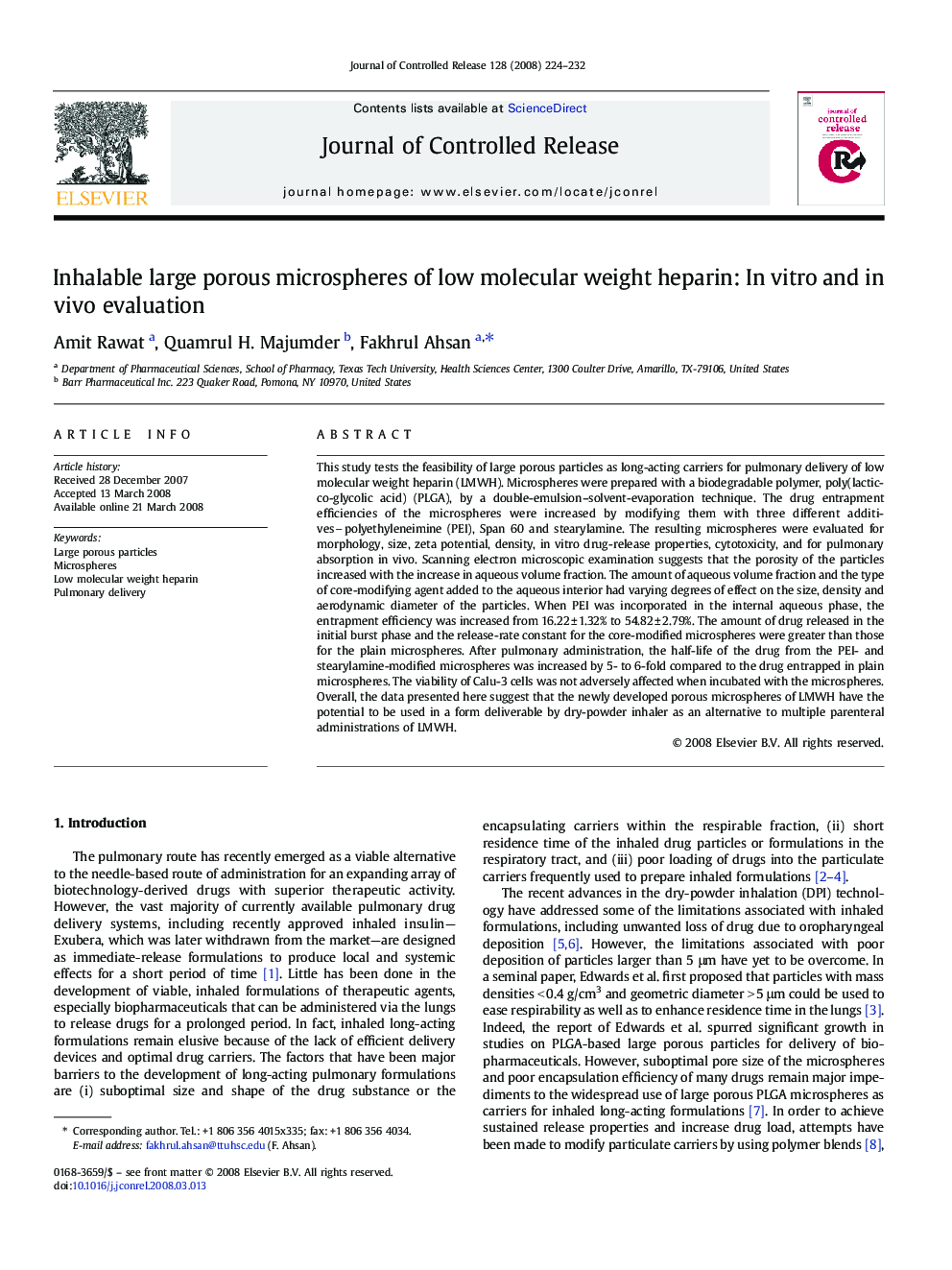| Article ID | Journal | Published Year | Pages | File Type |
|---|---|---|---|---|
| 1426943 | Journal of Controlled Release | 2008 | 9 Pages |
This study tests the feasibility of large porous particles as long-acting carriers for pulmonary delivery of low molecular weight heparin (LMWH). Microspheres were prepared with a biodegradable polymer, poly(lactic-co-glycolic acid) (PLGA), by a double-emulsion–solvent-evaporation technique. The drug entrapment efficiencies of the microspheres were increased by modifying them with three different additivespolyethyleneimine (PEI), Span 60 and stearylamine. The resulting microspheres were evaluated for morphology, size, zeta potential, density, in vitro drug-release properties, cytotoxicity, and for pulmonary absorption in vivo. Scanning electron microscopic examination suggests that the porosity of the particles increased with the increase in aqueous volume fraction. The amount of aqueous volume fraction and the type of core-modifying agent added to the aqueous interior had varying degrees of effect on the size, density and aerodynamic diameter of the particles. When PEI was incorporated in the internal aqueous phase, the entrapment efficiency was increased from 16.22 ± 1.32% to 54.82 ± 2.79%. The amount of drug released in the initial burst phase and the release-rate constant for the core-modified microspheres were greater than those for the plain microspheres. After pulmonary administration, the half-life of the drug from the PEI- and stearylamine-modified microspheres was increased by 5- to 6-fold compared to the drug entrapped in plain microspheres. The viability of Calu-3 cells was not adversely affected when incubated with the microspheres. Overall, the data presented here suggest that the newly developed porous microspheres of LMWH have the potential to be used in a form deliverable by dry-powder inhaler as an alternative to multiple parenteral administrations of LMWH.
